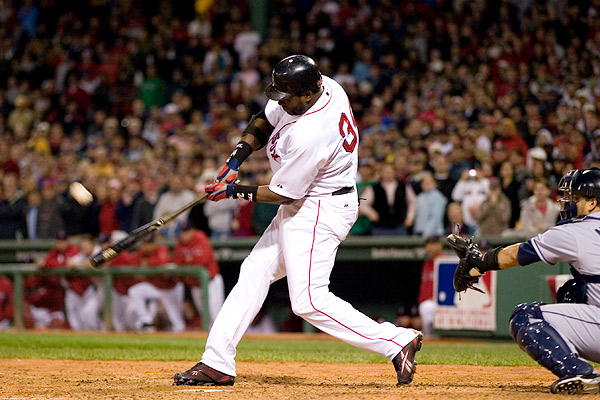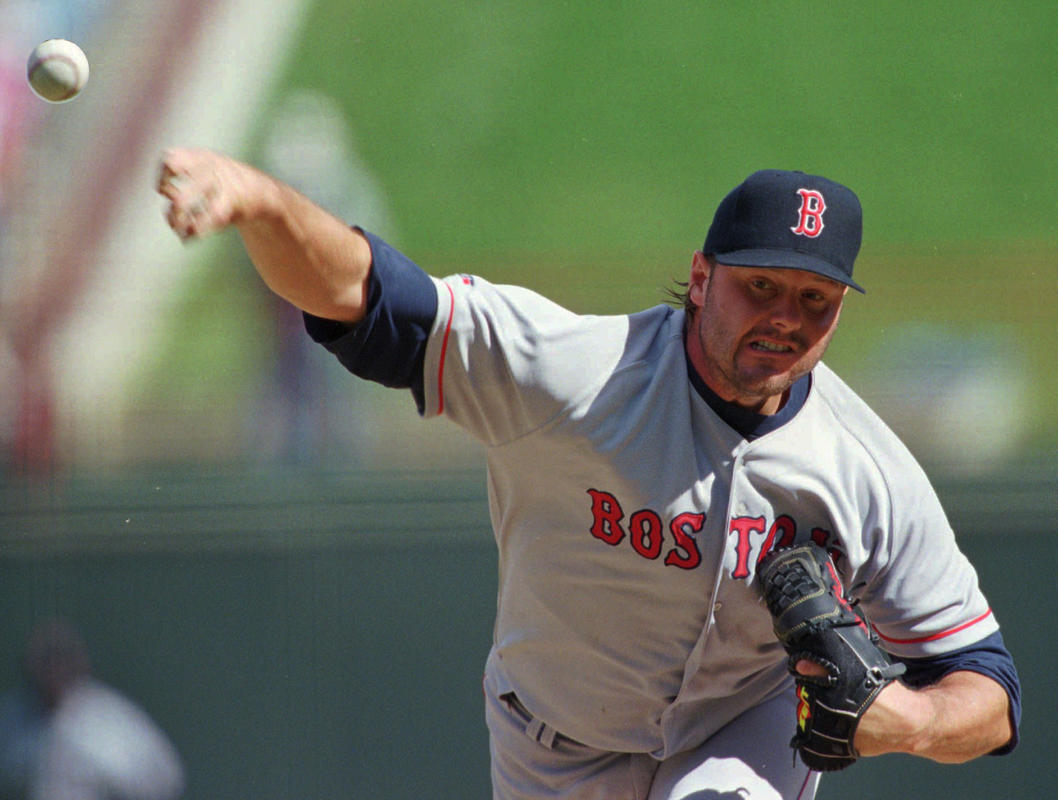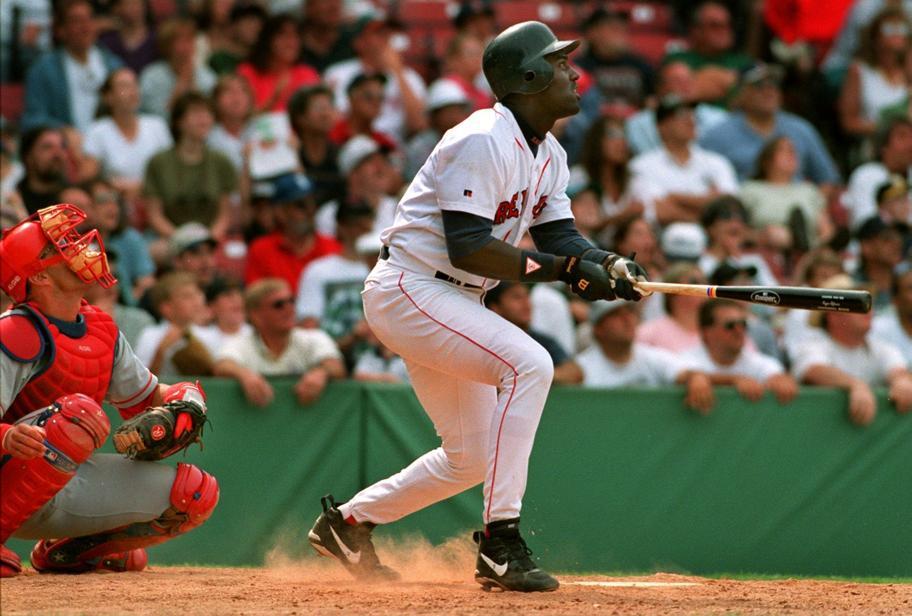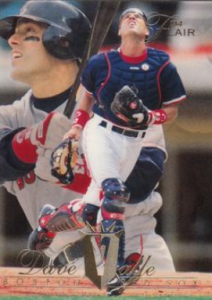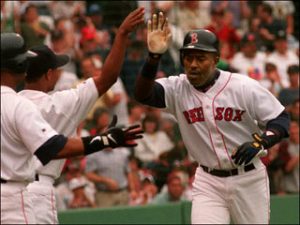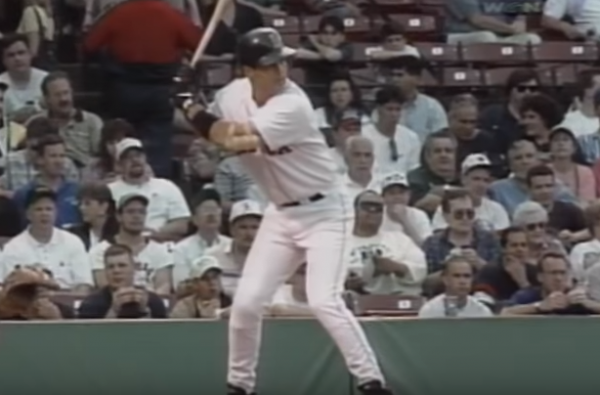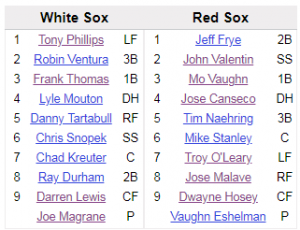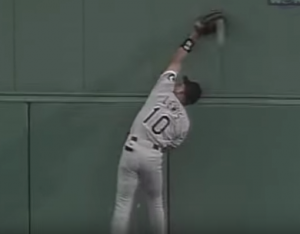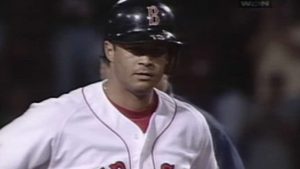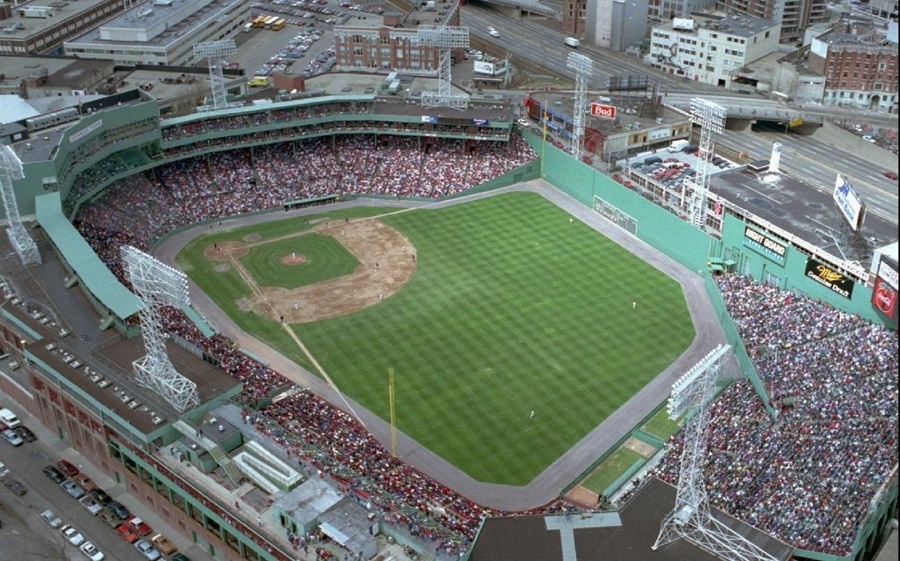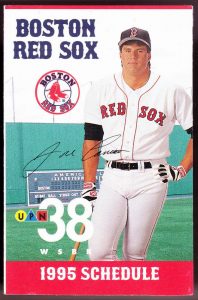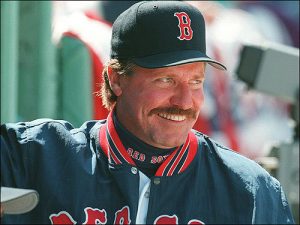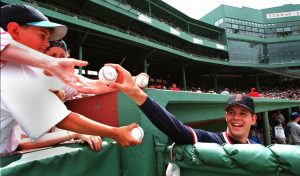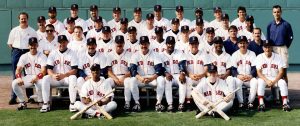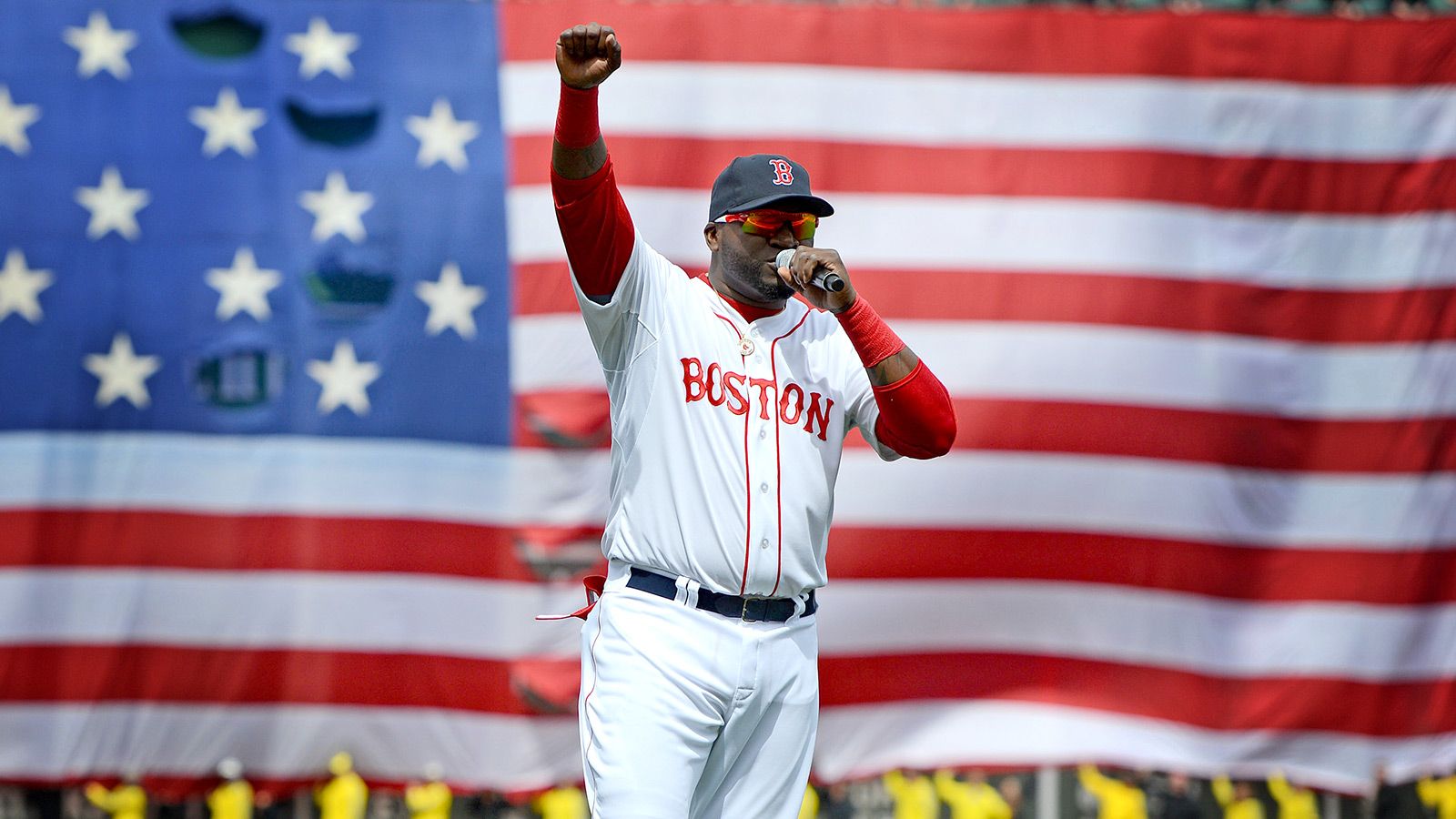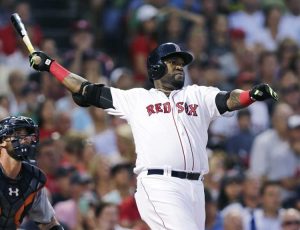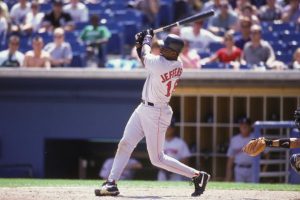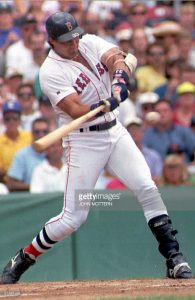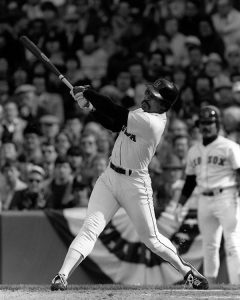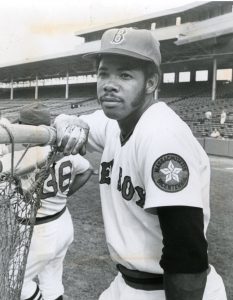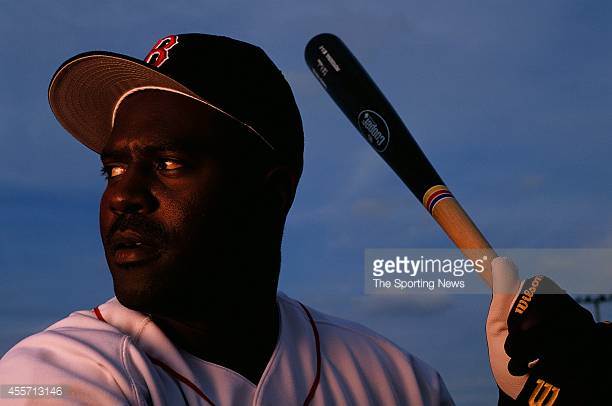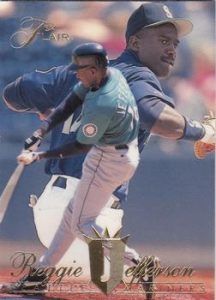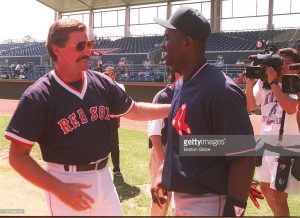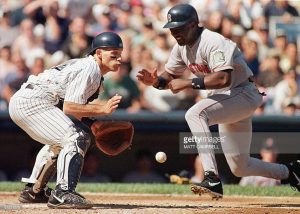The greatest Red Sox to wear the set of numbers between 31-35 are all recent players. In fact, the one who played for the Red Sox the longest ago was a key member of the 2004 curse breaking team. These five players won 10 World Series rings with the Red Sox. There is a retired number, a captain and a current Sox player.
Number 31 – Jon Lester
Lester played the role of Red Sox ace for several seasons. Before he got there, he had to overcome cancer at the age of 23. After his return from cancer, Lester played a role in winning the World Series in 2007, pitching 5.2 shutout innings in the final game of the series. The next year, he was ready to be the Ace on a team no one expected him to be. In May, he no-hit the Royals at Fenway Park. Lester finished 16-6 with a 3.21 ERA that season.
In 2009, Lester took a giant step forward in the strike out department, striking out 10 batters per nine innings. In 2010, he struck out 225 batters for the second straight season and led the American League in k/9. He made his first all-star team that season and won 19 games. The end result was a top five finish for the Cy Young Award.
After his second straight all-star appearance in 2011, Lester’s pitching dropped off significantly in 2012. He rebounded in 2013, then took his game to a new level for the postseason. After winning two games with a 2.33 ERA over the first two series, Lester dominated the Cardinals in the World Series. Lester won both games he pitched and allowed just one run between them. That ran his World Series career to one run over 21 innings pitched.
2014 would be Lester’s last in a Red Sox uniform, as the team traded him at the deadline. Lester was having his best season, posting a 2.52 ERA over 21 starts before the trade. He made his third all-star team that season. Lester was 110-63 with a 3.64 ERA with the Sox. He pitched even better in the playoffs, winning six games with a 2.11 ERA.
Honorable Mention: Ferguson Jenkins
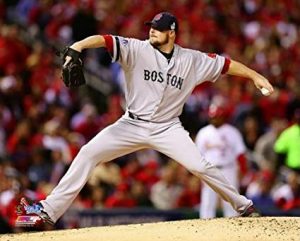
Number 32 – Derek Lowe
Lowe’s Red Sox career had its share of ups and downs, but overall he was a good pitcher. Lowe also was one of many Red Sox to play the role of hero in 2004. Acquired from the Mariners along with Jason Varitek for blown save machine Heathcliff Slocumb, Lowe was brought aboard in one of the more lopsided trades in baseball history.
Lowe started his career as a swingman and didn’t have immediate success with the team. He was stellar in 1999 though, even working his way to the closers role as he saved 15 games. Lowe had a 2.63 ERA with a WHIP below 1.00 that season. In 2000, serving as closer for the entire season, Lowe had a 2.56 ERA and led the league with 42 saves while making his first all-star team. Lowe’s closing ability took a turn for the worse the following season though, as he lost the role of closer. With his ERA over 4.00, the team experimented with him starting, giving him three starts to finish the season. Lowe allowed just two runs over the three starts.
As a full-time starter in 2002, Lowe came out of the gates hot, allowing just one hit over seven shutout in his first start. By the end of April, Lowe was no-hitting the Devil Rays at Fenway Park. He finished the season 21-6 with a 2.58 ERA and came in third for the Cy Young. No one could have imagined this success, and although it was a career season, Lowe had plenty more good pitching to come.
Lowe won 17 games in 2003, although his pitching fell off quite a lot. In 2004, his ERA was all the way up to 5.42 and he found himself excluded from the ALDS rotation. However, Lowe was on the mound to earn the win in the deciding game of the series over the Angels. Down 0-3 to the Yankees in the ALCS, Lowe pitched well enough to give the Red Sox a chance as they staved off elimination. He took the mound in game seven and was again the winning pitcher in a deciding game. In game four of the World Series, Lowe finished off the trifecta, pitching seven shutout innings as the Red Sox swept the Cardinals. Lowe was the winning pitcher in the series-clinching win of all three postseason series to finish out his Red Sox career.
Honorable Mention: Craig Breslow
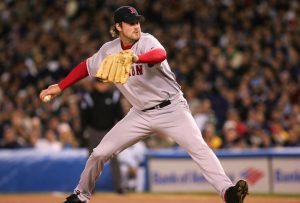
Number 33 – Jason Varitek
“The Captain” is number 33 of course. Varitek meant a ton to the team, leading up to the curse breaking, breaking the curse, and then the ones following up on that. His leadership in the clubhouse as well as on the field was invaluable. He called a great game and is one of only two catchers ever to have caught four no-hitters.
Varitek split time with Scott Hatteberg at the catcher position in 1998. The Red Sox felt comfortable enough handing the starting gig to Varitek in 1999, and he rewarded them with a 20 home run season. The starting job was his for the next decade. He looked like he was on his way to a career year in 2001 before he broke his elbow diving for a foul pop on the on-deck circle.
Varitek’s real breakout came in 2003. He made his first all-star team that season and mashed 25 home runs, a number that would remain his career high. He hit four home runs in the postseason with an OPS over 1.000. The next season he batted .296 with a career best .872 OPS. He would hit .321 with two home runs in the seven game ALCS against the Yankees. Oh, and who could forget his encounter with Alex Rodriguez from that summer?
Varitek hit .281 with 22 home runs and an .856 OPS in 2005. During that three year stretch from 2003-05, Varitek’s average season was .283 with 22 home runs and an .863 OPS. He was one of the very best offensive catchers in the game while also being invaluable behind the plate. His offensive production did fall off after that, but he did have a solid 2007. Varitek hit .255 with 17 home runs and a .787 OPS that year. He then won his second World Series in the fall.
In addition to the rings and the no-hitters, Varitek made three All-Star Games, won a Gold Glove and a Silver Slugger Award. He probably should have won more Gold Gloves than he did. He is tenth in franchise history in games played. Furthermore his 193 home runs are the most by a catcher for the Red Sox. Varitek will forever be one of the most beloved and well-respected Red Sox.
Honorable Mentions: Jose Canseco, Dave “Boo” Ferriss
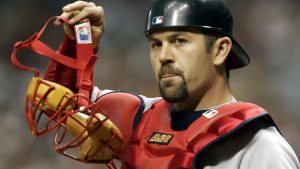
Number 34 – David Ortiz
No words can really say what David Ortiz meant to the franchise. He might be the most popular player in franchise history. He had countless big hits, countless walk-offs, and without his heroics in 2004 the curse wouldn’t have ended. Again in 2013, with his rallying speech following the marathon bombings, as well as his grand slam in game two of the ALCS, the 2013 World Series doesn’t happen without Ortiz.
It took the Red Sox a couple months to finally give Ortiz the playing time he deserved in 2003. Once they gave it to him, he raked, hitting .293 with 29 homers and a 1.010 OPS from June 1st on. With his clutch hitting he managed to enter the MVP race. It was the first of five consecutive seasons in which Ortiz would place in the top five for the MVP. He led the league in RBI in both 2005 and 2006 and set a Red Sox franchise record when he hit 54 home runs in 2006. From 2004-07 he averaged a season of .304 with 44 home runs, 135 RBI and a 1.024 OPS.
After a couple down seasons during which he still managed to hit 51 home runs, Ortiz rebounded in 2010 and enjoyed another productive run through the end of his career. In 2011 he batted over .300 for the first time since 2007. He would accomplish this again in 2012, 2013 and 2016. Ortiz saved the best for last, batting .315 with 38 home runs and a league-leading 48 doubles and 127 RBI at the age of 40 in 2016. He also led the league in slugging (.620) and OPS (1.021). Ortiz had his number 34 retired by the Sox the very next season.
Honorable Mentions: Rich Garces, Scott Cooper
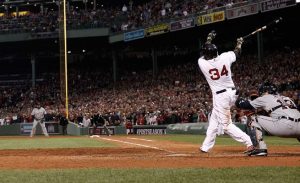
Number 35 – Steven Wright
Although he may not be on the level as the four preceding him in this list, Wright would take number 35 on the strength of his 2016 season alone. He also has won two World Series rings with the Red Sox, giving this group 10 total among them.
The knuckleballer didn’t make the majors until he was 28 years old. With his four appearances during that 2013 season he got himself a ring. He showed some ability over the next two seasons, winning five games with a 3.75 ERA.
2016 brought Steven Wright’s career season, and it could have been even better had John Farrell not inexplicably pinch-run him. Wright, the team’s ace to that point in the season, hurt his shoulder while pinch-running and had to go on the disabled list. Wright had thrown a complete game shutout in his previous start to improve to 13-5 with a 3.01 ERA. After a disabled list trip, he didn’t fare well in two starts and was shut down for the season.
Unfortunately, Wright has not been healthy much since then. This season he pitched very well, but was on and off the disabled list all season long and didn’t pitch in the postseason. When healthy, Wright was 3-1 with a 2.68 ERA over four starts and 16 relief appearances. So far in his career he is 24-15 with a 3.77 ERA and one All-Star Game.
Honorable Mentions: Billy Klaus, Burke Badenhop

Boston Red Sox relief pitcher Steven Wright (35) pitches during the seventh inning against the New York Yankees at Fenway Park. Mandatory Credit: Bob DeChiara-USA TODAY Sports
